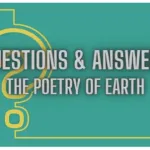Thiruvalluvar University in Vellore provides comprehensive education across various disciplines. Understanding past question patterns helps students excel in their exams. This guide includes essential questions and answers across subjects like English, Mathematics, Computer Science, and more, to aid in thorough preparation.
English
Question: What is a metaphor?
Answer: A metaphor is a figure of speech that compares two unrelated things, implying they are the same without using “like” or “as.”
Question: Explain the theme of William Wordsworth’s poem “Daffodils.”
Answer: The theme is the beauty of nature and how it uplifts the human spirit, offering solace and joy in solitude.
Question: What is the difference between active and passive voice?
Answer: In active voice, the subject performs the action. In passive voice, the subject receives the action.
Question: Define a compound sentence.
Answer: A compound sentence contains two or more independent clauses joined by a conjunction or semicolon.
Question: What is alliteration?
Answer: Alliteration is the repetition of the same initial consonant sounds in neighboring words for effect.
Question: What are the characteristics of Shakespearean sonnets?
Answer: Shakespearean sonnets have 14 lines, a rhyme scheme of ABAB CDCD EFEF GG, and are written in iambic pentameter.
Question: Explain the importance of a topic sentence in a paragraph.
Answer: A topic sentence summarizes the main idea of a paragraph and guides the reader’s understanding of its content.
Question: What is the role of a thesis statement in an essay?
Answer: A thesis statement outlines the essay’s main argument or purpose, providing a clear focus for the reader.
Question: Define onomatopoeia with examples.
Answer: Onomatopoeia refers to words that imitate natural sounds, such as “buzz,” “clang,” or “whisper.”
Question: How do similes differ from metaphors?
Answer: Similes compare two things using “like” or “as,” while metaphors directly state the comparison.
Question: What is personification?
Answer: Personification is a literary device where non-human things are given human characteristics.
Question: Describe the main idea of George Orwell’s “1984.”
Answer: “1984” critiques totalitarian regimes, emphasizing the dangers of surveillance, propaganda, and loss of individual freedoms.
Question: What are the major themes in Jane Austen’s “Pride and Prejudice”?
Answer: Major themes include love, social class, family, and personal growth.
Question: Define irony with examples.
Answer: Irony occurs when there is a contrast between expectations and reality, such as situational, verbal, or dramatic irony.
Question: What is the difference between denotation and connotation?
Answer: Denotation is the literal meaning of a word, while connotation is its emotional or cultural association.
Question: Explain the purpose of a conclusion in an essay.
Answer: A conclusion summarizes the essay’s main points and reinforces its argument or significance.
Question: What is free verse poetry?
Answer: Free verse poetry lacks consistent rhyme and meter, giving poets freedom to structure their work.
Question: Define symbolism in literature.
Answer: Symbolism uses objects, characters, or events to represent deeper meanings or concepts.
Question: What is a narrative poem?
Answer: A narrative poem tells a story with characters, a setting, and a plot.
Mathematics
Question: What is the Pythagorean theorem?
Answer: The Pythagorean theorem states that in a right triangle, the square of the hypotenuse equals the sum of the squares of the other two sides.
Question: Define a prime number.
Answer: A prime number is a number greater than 1 with only two divisors: 1 and itself.
Question: What is the formula for the area of a circle?
Answer: The area of a circle is πr², where r is the radius.
Question: Explain the difference between mean, median, and mode.
Answer: The mean is the average, the median is the middle value, and the mode is the most frequently occurring value in a data set.
Question: What is the quadratic formula?
Answer: The quadratic formula is x = (-b ± √(b² – 4ac)) / 2a, used to solve quadratic equations.
Question: Define an acute angle.
Answer: An acute angle is an angle that measures less than 90 degrees.
Question: What are parallel lines?
Answer: Parallel lines are lines in a plane that never intersect, regardless of how far they are extended.
Question: How do you find the perimeter of a rectangle?
Answer: The perimeter of a rectangle is 2(length + width).
Question: What is a scalene triangle?
Answer: A scalene triangle is a triangle with all sides of different lengths.
Question: Define probability in mathematics.
Answer: Probability measures the likelihood of an event occurring, ranging from 0 to 1.
Question: What is the formula for compound interest?
Answer: Compound interest is calculated using A = P(1 + r/n)^(nt), where P is the principal, r is the rate, n is the number of times interest is compounded per year, and t is time.
Question: What are integers?
Answer: Integers are whole numbers, including positive numbers, negative numbers, and zero.
Question: Define a rational number.
Answer: A rational number is any number that can be expressed as a fraction p/q, where q ≠ 0.
Question: What is the slope of a line?
Answer: The slope of a line is the ratio of the vertical change (rise) to the horizontal change (run) between two points on the line.
Question: Explain the difference between a circle and an ellipse.
Answer: A circle is a set of points equidistant from a center, while an ellipse has two foci and the sum of distances to them is constant.
Question: What is a factorial?
Answer: A factorial, denoted by n!, is the product of all positive integers up to n.
Question: What is the value of pi?
Answer: Pi (π) is an irrational number approximately equal to 3.14159, representing the ratio of a circle’s circumference to its diameter.
Question: What is an isosceles triangle?
Answer: An isosceles triangle has two sides of equal length and two equal angles.
Question: Define an arithmetic sequence.
Answer: An arithmetic sequence is a sequence of numbers with a constant difference between consecutive terms.
Computer Science
Question: What is an algorithm?
Answer: An algorithm is a step-by-step procedure or formula for solving a problem.
Question: Define a database.
Answer: A database is an organized collection of data that can be easily accessed, managed, and updated.
Question: What is a programming language?
Answer: A programming language is a formal language used to communicate instructions to a computer.
Question: What is the purpose of an operating system?
Answer: An operating system manages hardware and software resources, providing services for computer programs.
Question: Define artificial intelligence.
Answer: Artificial intelligence is the simulation of human intelligence in machines programmed to think and learn.
Question: What is the difference between hardware and software?
Answer: Hardware refers to the physical components of a computer, while software is a set of instructions that tells the hardware what to do.
Question: What is cloud computing?
Answer: Cloud computing is the delivery of computing services over the internet, including storage, processing, and software.
Question: Define cybersecurity.
Answer: Cybersecurity is the practice of protecting systems, networks, and data from digital attacks.
Question: What is a compiler?
Answer: A compiler is a program that converts source code written in a programming language into machine code.
Question: What is the role of RAM in a computer?
Answer: RAM (Random Access Memory) temporarily stores data that the CPU uses while performing tasks.
Question: What is a URL?
Answer: A URL (Uniform Resource Locator) is the address used to access a resource on the internet.
Question: Define machine learning.
Answer: Machine learning is a subset of AI where machines improve their performance through data and experience without explicit programming.
Question: What is an IP address?
Answer: An IP address is a unique identifier assigned to devices on a network for communication.
Question: Explain the function of a router.
Answer: A router directs data packets between networks, ensuring efficient communication.
Question: What is a firewall?
Answer: A firewall is a security system that monitors and controls incoming and outgoing network traffic.
Question: What is the difference between HTTP and HTTPS?
Answer: HTTPS is the secure version of HTTP, encrypting data for safer communication on the web.
Question: Define software development life cycle (SDLC).
Answer: SDLC is the process of planning, developing, testing, deploying, and maintaining software applications.
Question: What is a data structure?
Answer: A data structure organizes and stores data in a way that enables efficient access and modification.
Question: What is an API?
Answer: An API (Application Programming Interface) is a set of rules that allows different software applications to communicate.
Concluding Summary
Preparation is crucial for excelling in exams at Thiruvalluvar University. Familiarity with question paper patterns across subjects can significantly enhance performance. This guide serves as a reliable resource to review key concepts and practice effectively. Consistent effort and understanding of topics are the foundation of academic success.
Latest Posts
- Step-by-step guide to download and apply for jee mains admit card 202
- Comprehensive 2025 government holidays and recruitment details for job seekers
- JEE Mains Admit Card 2025: Your Step-by-Step Guide to Downloading the Hall Ticket
- Everything You Need to Know About 2025 Government Holidays Recruitment
- Comprehensive Guide to rrb d group recruitment 2025 – Eligibility, Vacancies, and Application
- Detailed guide to nps trust recruitment 2025 vacancies, eligibility and apply process
- Comprehensive guide to hpcl recruitment 2025 notification, vacancies, and application process
- ignou bed admission 2025 complete recruitment guide with eligibility and process
- Comprehensive Guide to Indian Army Agniveer Recruitment 2025 Notification and Jobs
- Everything You Must Know About CBSE Board Exams 2025 Changes & New Rules





